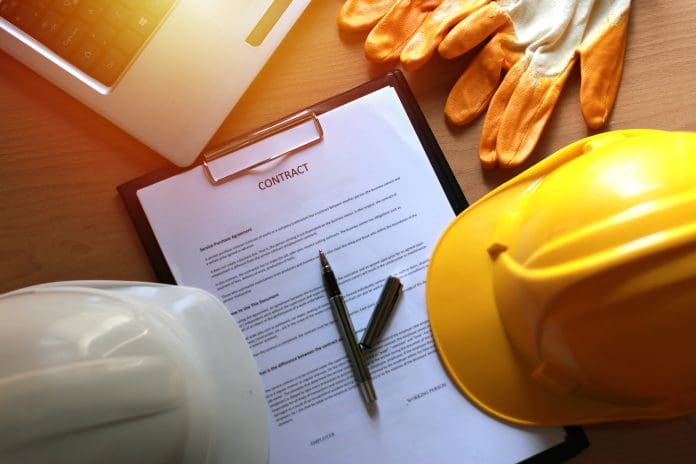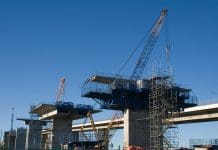The intricacies of construction contracts often lead to disputes that can delay projects, escalate costs, and strain professional relationships. One strategy to mitigate these issues is the use of conflict avoidance agreements
These agreements, when crafted with foresight and diligence, can prove a vital tool in managing potential disagreements, thereby promoting a harmonious working environment. Furthermore, they encourage open communication and proactive problem-solving, keeping the focus firmly on project success rather than on disputes.
In order to effectively manage and prevent disputes in construction contracts, it is paramount to understand the various sources of conflicts, the strategies for conflict avoidance, the mechanisms for dispute resolution, and the potential impacts of such disputes on the project and stakeholders involved.
Sources of conflict in contract disputes
Understanding construction contract disputes begins with recognising the common sources of conflict, such as ambiguous project plans, change orders, unclear milestones, unjustified delays, and nonpayment issues.
The impact of construction disputes can be significant, disrupting project timelines, escalating costs, damaging professional relationships, and posing legal and reputational risks. Therefore, preventing disputes and managing them effectively when they do arise, is essential for the successful execution of construction contracts.
Conflict avoidance agreements serve as a proactive measure in preventing disputes, by establishing clear guidelines and procedures. Strategies for conflict avoidance in construction contracts may include escrowing bid documents, effective delegation of authority, using a Dispute Resolution Ladder, implementing partnering strategies, and early intervention. These strategies foster open communication, collaboration and transparency, helping to mitigate potential issues before they escalate.
The resolution of construction contract disputes often involves mediation, adjudication, arbitration, litigation, and expert determination. These mechanisms provide a structured process, thereby safeguarding the project timelines and professional relationships.
Expert witnesses can play a pivotal role. Providing technical expertise, they evaluate claims, offer expert testimony, support efficient dispute resolution and contribute to the continuous improvement of dispute prevention and early conflict resolution in the construction industry.
Conflict avoidance agreements
Conflict avoidance agreements create a framework for proactive conflict management, allowing all parties involved to address potential issues before they escalate into full-blown disputes. These agreements provide clear guidelines and procedures to tackle disagreements, safeguarding the interests of all stakeholders. They also promote transparency, encouraging open communication and collaboration.
This approach to dispute avoidance can lead to significant cost savings, as statistics reveal that construction disputes often involve high financial stakes, with an average claim value of $100 million.
To ensure the efficacy of conflict avoidance agreements in construction contracts, it is essential to incorporate certain key elements such as the use of conflict avoidance panels, early neutral evaluation, dispute avoidance boards, and properly drafted contracts. These elements collectively contribute to the prevention of potential disputes and facilitate smooth contract administration.
Conflict avoidance panels provide a neutral platform for parties to address issues early in the contractual relationship. These panels, comprised of experienced industry professionals, offer impartial advice and recommendations, thereby addressing potential disputes efficiently.
Early neutral evaluation is another key element. An independent third party provides an unbiased assessment of potential disputes, allowing parties to understand the strengths and weaknesses of their positions and negotiate resolutions proactively.
Equally important are dispute avoidance boards. These boards, typically composed of industry experts, monitor project progress, provide non-binding recommendations, and facilitate dispute resolution, thereby preventing conflicts from escalating.
Finally, the backbone of effective conflict avoidance is a properly drafted contract. Clearly defined roles, responsibilities, expectations, and processes for dispute resolution can significantly reduce the likelihood of disagreements.
Case Study: Successful dispute prevention
Let’s examine a real-world example showcasing successful dispute prevention in a construction contract scenario. The case study involves a large-scale infrastructure project where the parties adopted a proactive avoidance procedure, implemented at the onset of the project.
At the contract stage, both parties agreed to a conflict avoidance agreement. This agreement outlined clear procedures for dispute prevention, which included regular project meetings, clear communication channels, and an agreed escalation process for any disagreements. The proactive approach allowed for open dialogue and provided a framework for resolving issues before they became disputes.
The effect of this strategy was remarkable:
- The project was completed on time and within budget. This achievement was due largely to the effective management of potential disputes.
- The professional relationships between the parties remained intact, fostering a positive working atmosphere throughout the project.
- The parties were able to focus on achieving their respective project goals rather than getting entangled in dispute resolution processes.
- The success of the project improved the parties’ reputations within the construction industry, opening doors for future collaborations.
Preventing disputes with advanced technologies
As the construction industry continues to evolve, so too does the approach to dispute resolution, with emerging trends highlighting the importance of advanced technologies, alternative project delivery methods, and effective risk management. These trends are shaping the future perspectives on construction dispute resolution.
Advanced technologies are being leveraged to enhance collaboration, communication, and documentation, thus aiding in preventing disputes in construction contracts. Contract management software, for instance, can keep track of obligations, deadlines, and potential issues, providing a platform for proactive dispute prevention and resolution.
Alternative project delivery methods such as Integrated Project Delivery (IPD) and Design-Build (DB) are gaining ground. These methods foster collaboration from the project’s inception, reducing the chances of construction disputes. They involve stakeholders collaborating closely, sharing risk and reward, and working towards common project goals.
Effective risk management is another key area of focus. The future of construction dispute resolution necessitates active risk identification, evaluation, and management. This includes the allocation of risks through negotiated contracts to parties best equipped to handle them, thereby minimizing disputes.
Moreover, real-time dispute resolution strategies are emerging to avoid expensive litigation. Conflict avoidance agreements, properly drafted and executed construction contracts, and the use of conflict avoidance panels are some of the mechanisms being employed.














